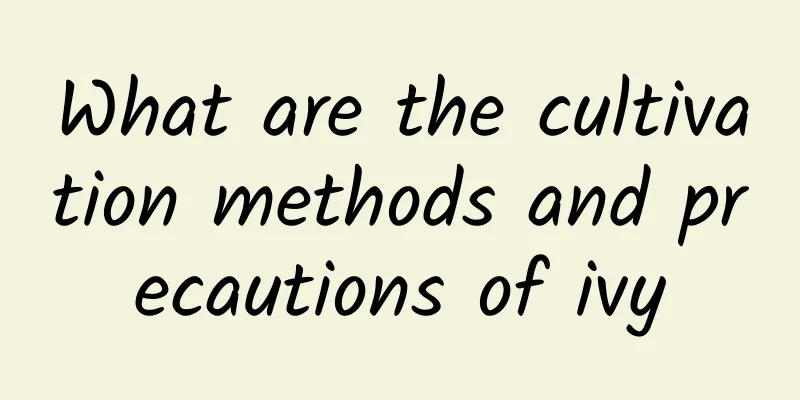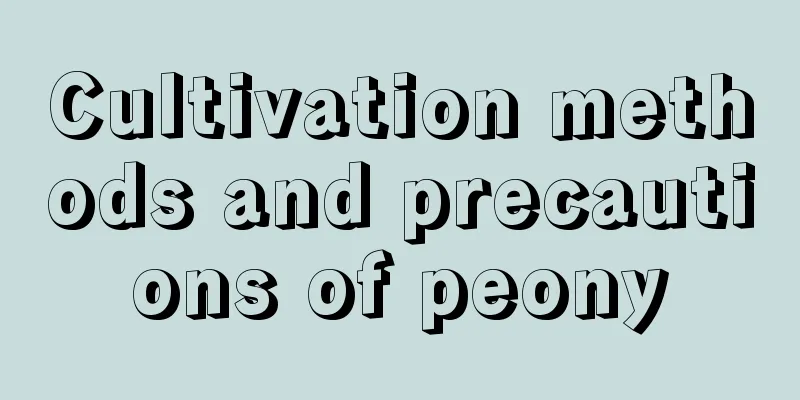What are the cultivation methods and precautions of ivy

Ivy growth habitIvy likes a warm and humid growing environment. It likes light and is shade-tolerant. The suitable growth temperature is 20~25 degrees. It does not like strong light and high temperature. Some varieties have a certain degree of cold resistance and can withstand short-term temperatures as low as minus 7~8 degrees. It likes loose, fertile, humus-rich, and well-drained soil. Potted ivy is generally repotted every 1~2 years, and repotting is mostly done in spring and autumn. Ivy cultivation methodSoil: When potting ivy, you can use garden soil: leaf humus in a 1:1 ratio, or you can use peat soil: leaf humus in a 2:1 ratio. Just make sure the soil is loose, aerated, and has a certain fertility. Light: In summer, you should pay attention to shade to prevent strong direct sunlight from sunburning the leaves. Ivy can also tolerate shade and grow well in bright places indoors. Temperature: The suitable growth temperature is 20-25℃. Pay attention to shade and cooling when raising it outdoors in summer. The temperature should be kept above 10℃ in winter. If it is lower than 5℃, frost damage is likely to occur. Watering: Water frequently during management to keep the plant moist. Spray and water more often in summer. Water evaporates slowly in winter, so reduce the amount of water and pay attention to temperature control. Normally, just water the soil or pour a little water on the leaves. Fertilization: A certain amount of base fertilizer is needed when planting. The base fertilizer can be decomposed organic fertilizer, and the topdressing can be decomposed organic fertilizer or nutrient solution. The base fertilizer needs to be mixed with the substrate, and the decomposed organic fertilizer used for topdressing can be buried in the soil. The nutrient solution needs to be dripped into the water of the hydroponic ivy; depending on the growth status, it is more appropriate to fertilize twice a month. Pruning: Cut off the leaves that are not growing well. After all, there is no use in keeping them and they take up space. Don't throw these leaves away. Let them rot in the soil to supplement nutrients. The dead leaves, which are comparable to fertilizers, can make the plant grow faster. Precautions for ivy cultivationEnvironmental ventilation: The ventilation of the growing environment of ivy is very important. If the ventilation is poor, it is easy to cause the harm of scabies. Therefore, the ventilation conditions of the breeding environment must be strengthened. Keep warm during the winter: Pay attention to keeping warm in winter, as low temperatures can easily cause ivy to suffer from frost damage. Repotting at the right time: After one or two years of cultivation, ivy should be repotted to ensure that the soil has sufficient nutrients and the plant grows normally. |
<<: What are the cultivation methods and precautions of geranium
>>: Can tulips be hydroponically cultivated? Hydroponics cultivation methods and precautions
Recommend
When is the best time to sow peppers?
Suitable time for sowing peppers Green pepper bel...
How to water tomatoes? Watering principles and correct methods
Tomato Watering Overview The specific time for wa...
How to plant bamboo seedlings? How to transplant bamboo
When planting bamboo seedlings, you should choose...
Is the firecracker flower poisonous?
one. Is it toxic? No, many people doubt whether i...
Does jasmine need to be pruned in winter?
1. Is pruning necessary? In winter, it needs to b...
What to do if the leaves of Phoenix bamboo turn yellow
Water yellow This is manifested in the young leav...
Putting a few pots of plants in the kitchen is so useful
Suitable plants for the kitchen The kitchen is th...
Succulent Clivia... grows too slowly? Just sprinkle some of it and it will grow wildly and fill the pot immediately!
Why don't flowers and plants grow big? Spring...
What kind of plant is seabuckthorn? What does the seabuckthorn plant look like?
1. What plants Sea buckthorn is a perennial decid...
How to properly water and fertilize Monstera? Does Monstera require light?
1. How to water and fertilize correctly 1. Wateri...
What are the cultivation methods and precautions of Milan flowers?
Milan flower cultivation method Milan flowers pre...
How to grow French perfume flowers
1. Breeding environment 1. Temperature: It likes ...
Pick up some honeycomb coal on the roadside, grow succulents there and they will grow faster. You won’t be afraid of them dying in the summer anymore!
Dig some honeycomb coal and you will no longer be...
When is the best time to water garlic during the winter?
During the wintering of garlic , correct irrigati...
What to do if Spathiphyllum doesn't bloom
1. Continue maintenance The Spathiphyllum has not...









